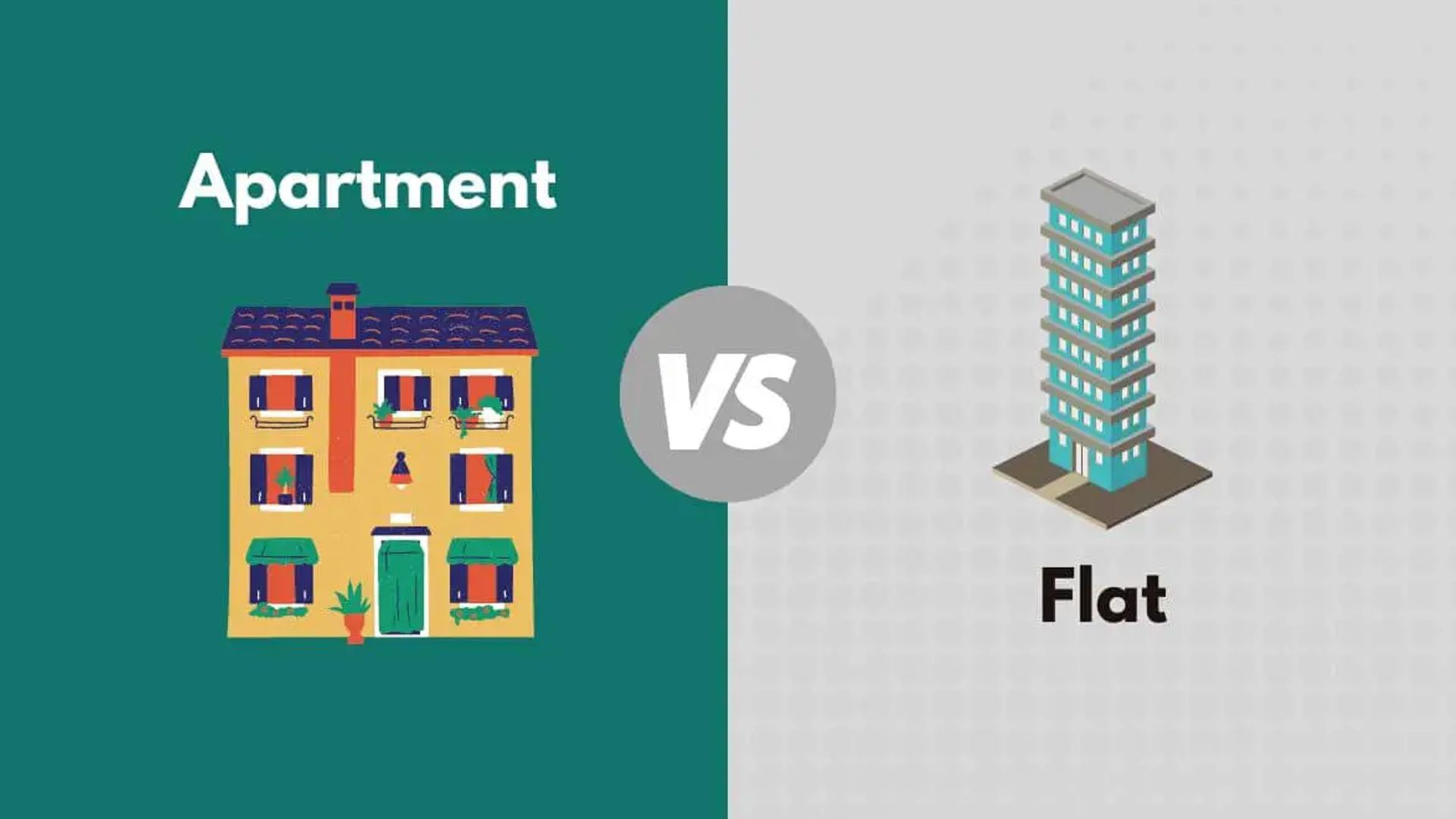Flat And Apartment; Is It The Same Or Different?

In real estate terminology, the terms flat and apartment are used quite often as well as interchangeably. While some argue they are the same, some come up with various differences between the two. Prior to digging deep into the characteristics, it would be prudent to know the origins of both the terms. The word ‘Apartment’ has been derived from the Italian word ‘appartamento’, which means a suite of rooms located in a larger building. Furthermore, appartamento is a derivation of the verb ‘appartere’ bearing the meaning ‘to separate’. North Americans refer to any suite of rooms used for eating, sleeping and bathing as an apartment. The word flat is commonly used in Britain and it derives from ‘flett’ an old English word. It has been used in describing a dwelling hall, floor or ground. During earlier times, a floor or a part of a floor being separated and set up as an apartment has been called a flat. Although the two words seem quite similar and hard to distinguish between, there are certain unique characteristics that make them different from each other.
A flat generally has a standard hall, a master bedroom, smaller rooms, a washroom and a kitchen. On the other hand, an apartment can be of any form. It could be a studio apartment, a townhouse or a duplex. While a flat is a single storey unit, an apartment can have multiple storeys. A flat would normally be equipped with only basic amenities and facilities. However, apartments consist all amenities and facilities that would be necessary, some of which may be luxury features. In a flat one would experience medium to high end living space, while in an apartment, high end living space. The occupant or the owner of a flat has to maintain the flat on his own. Nevertheless, the entity managing the complex of apartments charges occupants / owners a regular fee in order to maintain the property. Security is a major concern to anyone, be it an apartment or a flat. Owners / occupants of flats are left to invest and manage the security of the flat on their own. However, apartment owners are free from the headache of managing security as it is taken care by the developer constructing and managing the complex.
Having taken a look at the main differences, then comes the pros and cons of each housing type. Living in an apartment bestows one with a list of onsite conveniences such as a swimming pool, gym, jogging tracks, common garden areas, communal barbeques, housekeeping and laundry facilities as well as parking and security services. Although a monthly fee is being charged for the aforesaid facilities, having all you need under one roof is nothing but convenience. Housing developers most often select prime locations when constructing apartment complexes. This, in turn makes the life of occupants much easier. Furthermore, as apartments are offered in various sizes, buyers can decide upon a convenient size according to personal needs and requirements. When compared to a conventional family home, the utility costs of living in an apartment are usually lower. Apartments provide more social opportunities to occupants by enabling them in building long lasting friendships and connections, creating a sense of community. Despite all these pros, apartments come with an inherent set of cons as well. Noisy and annoying neighbors could have you on pins and needles for life. Lack of parking as well as yard space could also affect apartment occupants negatively in the long run. Also, certain complexes having restrictions on pets could limit one’s interests only to what is being offered within the compound.
Living in a flat has its own set of pros and cons just like apartments. Considering the financial aspect, flats could be of better affordability. Similarly, the maintenance cost would be lower than that of apartments. Parallel to apartments, flats are also constructed in strategic locations, making life easier for occupants. Nevertheless, the privacy level of occupants would be much lower as a single floor could have up to hundreds of units. The units would also be separated by a mere wall. Flats are smaller than apartments in size, and buyers do not have the benefit of selecting a convenient size as all units are generally the same size. Although located in strategic hot spots, flats seldom provide occupants with additional facilities such as swimming pools, gyms, housekeeping and laundry et cetera. Flats also have less potential in being renovated on a timely manner. Both these housing types have however been on top of the list, specially of suburban house seekers. Hence, having an understanding on both the types would be helpful.

